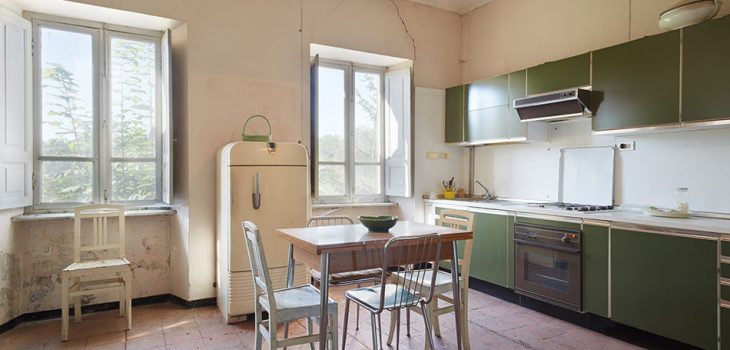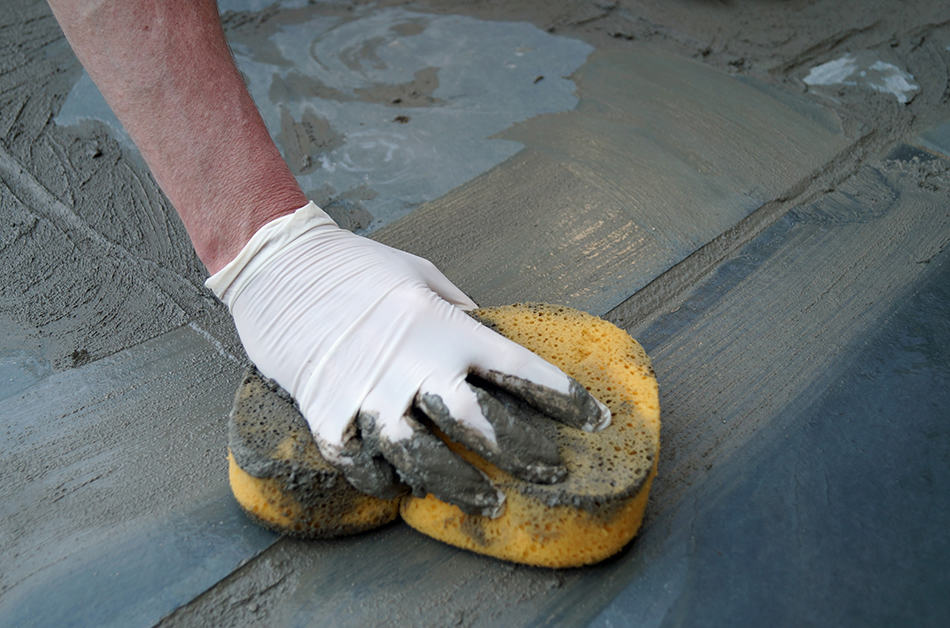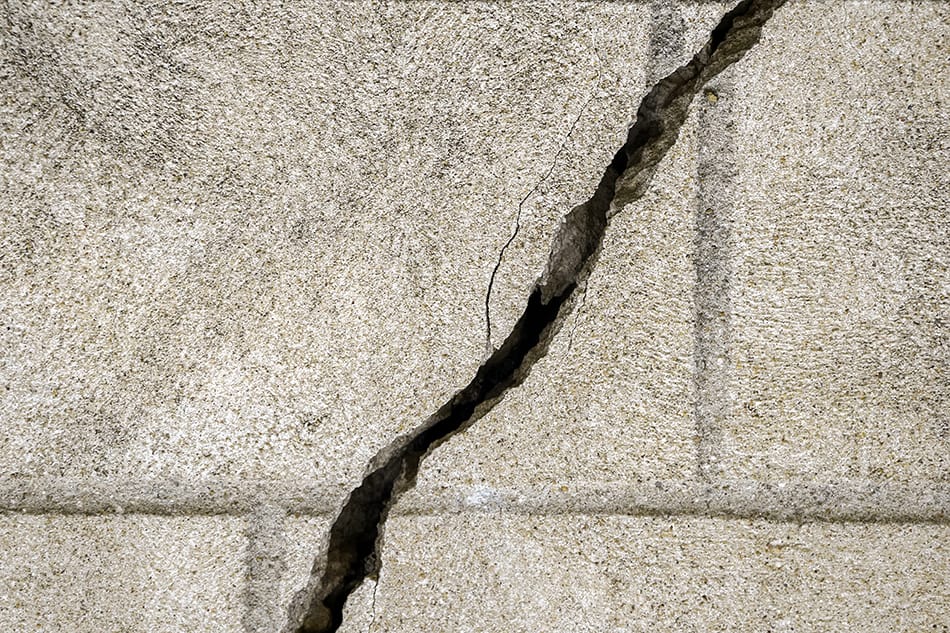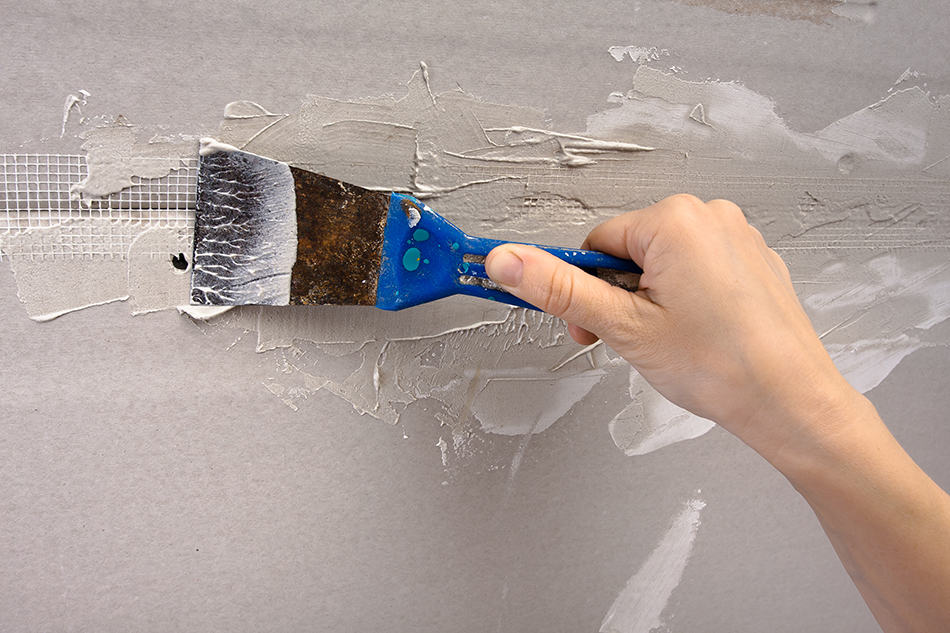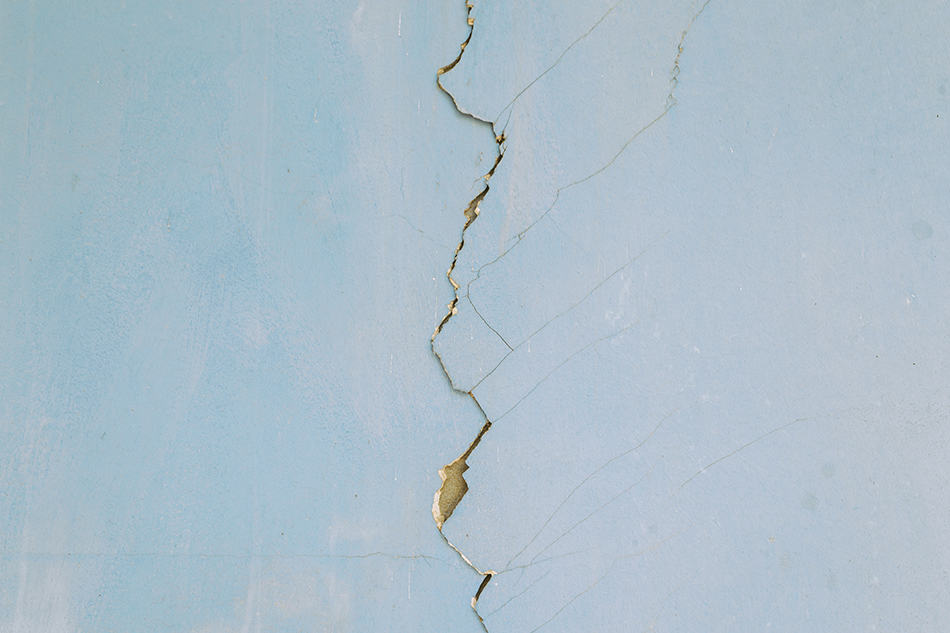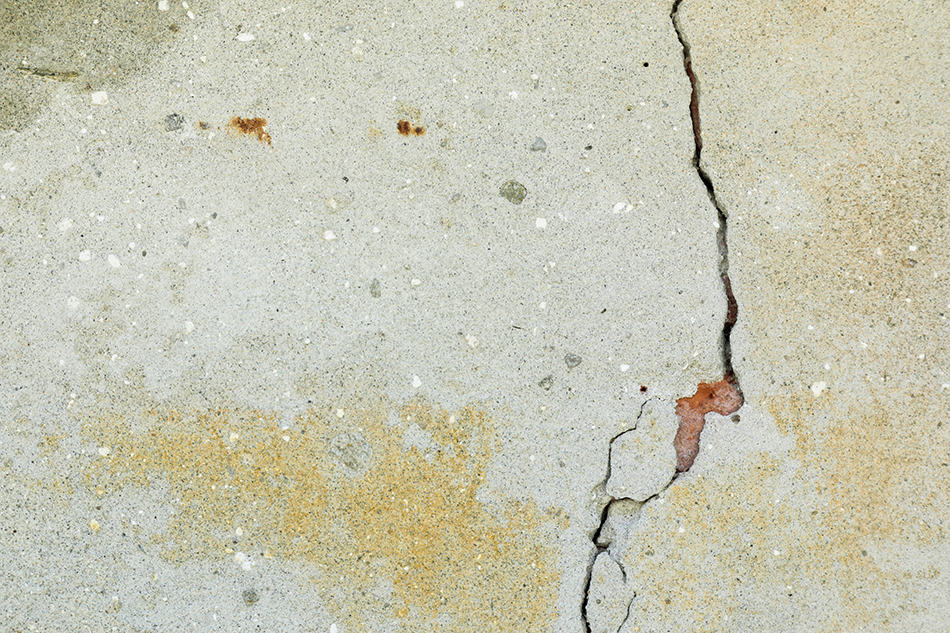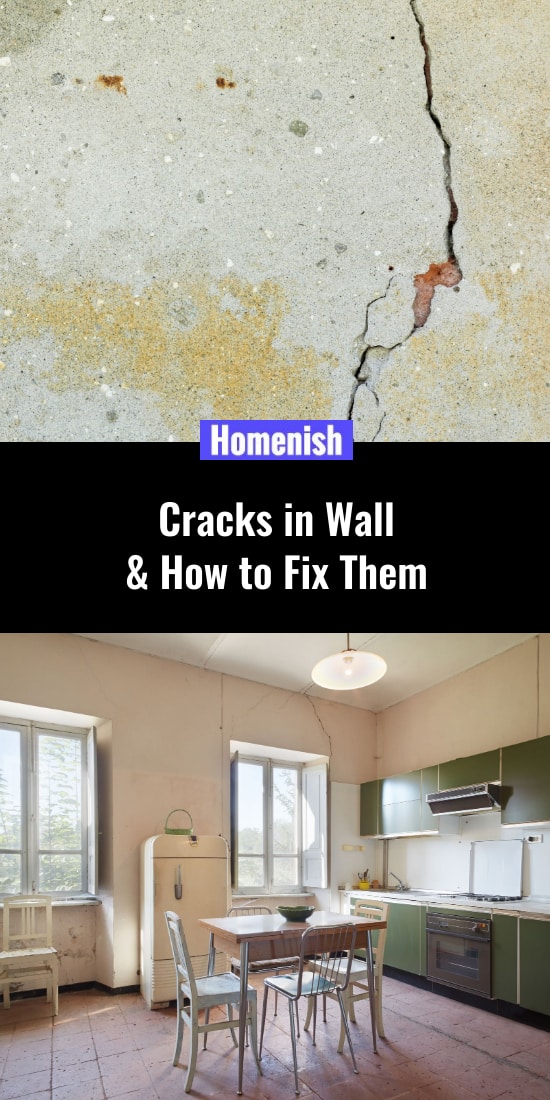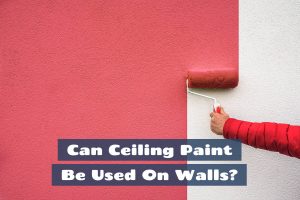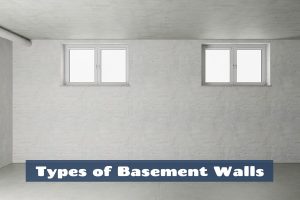Daily wear and tear, temperature fluctuations, and foundation settling of your home can eventually take their toll on the interior and exterior walls. Whether you live in a new or old house, cracks can start appearing across the plaster, concrete, or drywall. Such cracks are an eyesore, but depending on their severity, you don’t always need to call the professionals to fix them. It’s important to first determine the causes of these fissures before you start repairing them.
Once you’ve worked out the severity of the damage, with a few simple tricks, you’ll be able to repair the walls cracks in no time. But before you grab your toolkit, spend a few minutes reading this article to get a better insight into the causes of wall cracks and how to fix them.
Why Walls Crack
- Contraction and expansion: the materials that make up your wall are susceptible to contraction and expansion due to temperature changes and humidity levels. These fluctuations can cause hairline cracks to appear.
- Low-quality paint: over time, poor paint adhesion can lead to cracks on walls. You should only use the highest quality paint even if it costs more. Think about it; high-quality paint may hurt your pocket now, but it can save you from doing constant repair works on the walls.
- Ground heave: older homes with shallow clay foundations can experience expansion and contraction during weather changes. If the clay gets waterlogged, it can push the foundation upwards, thus causing wall cracks.
- Tree roots: trees that are too close to the property can cause ground movement and wall cracks.
- Wall tie failure: metal wall ties are built into the cavity and solid walls to hold the plaster or brickwork. When the ties rust, the walls can crack.
- Inadequate bearings: the correct bearing of the horizontal timber, concrete, stone, or steel support above wall openings should be around 6 inches on each side. If these bearings are insufficient, the horizontal support will drop and cause wall cracks.
Other reasons include:
- Wooden frames warping or shrinking
- Overspanned ceiling joists
- Overloaded ceiling joists from too many storage boxes in the attic
- Contaminated drywall mud
Larger cracks in the walls can be a sign of subsidence, which is a serious problem that requires major remedial works.This occurs when the ground beneath the house starts collapsing. Smaller cracks, on the other hand, are most likely caused by shrinkage due to temperature changes. Once you’ve identified the cause of your cracked wall, the next step is to determine how bad it is.
Assessing the Severity of Wall Cracks
Hairline or thin cracks that are consistent in width are mainly due to some contraction and expansion in the foundation. Such fissures are not a cause for concern and can easily be fixed. But if you see multiple cracks throughout the walls of your home, this could be an indication of foundation settling.
To assess the severity of the wall crack, hold a quarter coin between your thumb and finger and press the edge of the coin against the crack. If the crack is thinner than the coin, then it’s only a minor fissure. However, if it’s wider than the coin, it’s more than likely a settling crack. This is especially concerning if the cracks appear around the window or door frames. It is also worth checking your basement or crawl space for signs of cracks as these fissures indicate a problem in your home’s foundation.
Now that you’ve determined the severity of the damage, here are the most common types of wall cracks and their repair solutions.
Types of Wall Cracks
- Horizontal cracks: these are caused by insufficient use of building materials during construction. Consequently, the lack of adhesion between the wall joints causes the material to slide over.
- Branch-like or hairline fissures: hairline cracks that look like tree branches are caused by moisture or humidity. These are the most common types of wall cracks that mainly appear in bedrooms, basements, and kitchens.
- Vertical cracks: these types of cracks usually appear between the joints in the wall. They form between the wall structure and the floor. The main cause is the use of low-quality building materials. In cases of more severe cracks, the insufficient reinforcement is to blame.
- Expansion cracks in masonry walls: when the masonry walls are affected by moisture and temperature changes, expansion cracks appear. Initially, the masonry can suffer from shrinkage before it expands and contracts. This movement causes expansion cracks in stone walls.
- Diagonal cracks: these types of cracks are the most serious of them all since they can compromise the entire structure of the property. Diagonal cracks are a sign of structural damage and minor repairs won’t be sufficient to cover them. In this situation, you must consult a structural expert to assess the crack.
How to Fix Wall Cracks
Hairline or Minor Cracks in Concrete
As I mentioned before, hairline cracks on concrete walls are non-structural fissures that are most common in homes. These cracks are a simple DIY job using a scraper, nails, sealant and epoxy filler. Before starting the repair work, clean out the crack by removing any loose debris or paint.
Once the surface has been cleared up, sand it down to ensure it’s completely smooth. Insert finishing nails into the crack, spaced 10 inches apart. Apply some sealant on the base of the injection ports but make sure the nails stick out of the wall.
Next, use an epoxy filler to create a watertight seal in the crack. This filler comes in two parts, which you’ll need to mix prior to using. Mix equal parts in a container using a 1.5 inch-wide utility knife and apply small amounts to the crack. The epoxy mix should extend one inch on either side of the crack to completely cover it. You can use a paintbrush to smooth over the epoxy at the edges. Allow the mix to cure for 5 days then cut off the ports with a hacksaw.
Diagonal Cracks in Concrete
Since concrete walls are load-bearing, they are more susceptible to cracks. Although it’s easy to fix minor cracks in concrete walls, deeper fissures are a sign of poor structural integrity. To determine the extent of the structural damage, you must assess how long the diagonal crack has been there, and how large it is. If the size of the diagonal crack is so big that you can easily see through it, or the wall has partly collapsed, you must contact a structural surveyor immediately as the entire building’s structural integrity is at risk. Diagonal cracks are usually signs of deeper damages in the foundation so you’ll need a professional to determine the extent of the damage.
Hairline Cracks in Plaster Walls
In the case of cracks on plaster walls, you’ll have better success if you use a filler compound before taping the cracks with a joint compound. Fill each crack until it’s as smooth as the wall. To level the filler, use a clean filling knife dipped in water and run it along the crack line before covering the surface with a joint compound. Use emulsion paint to finish the job.
Minor Cracks in Drywall
Most drywalls come in either 9.5mm or 12.5 mm thickness so it’s easy to make repairs to them. Note: Before cutting through the drywall, make sure there are no electrical wires inside by using a detector.
Next, clean up the surface around the cracks and measure the area. Use a drywall saw or knife to cut a new piece to size. Allow an extra 25mm at the top and bottom and drill a hole in the middle of the new drywall piece. Place a nail inside the hole so that the long pointed end of the nail sticks outwards. Add drywall glue to the top and bottom sections and gently slide it into the hole. Make sure the glue bonds the drywall by pushing the nail through. The drywall is now ready to be covered with plaster or filler. When it’s fully dry, sand it down for a smooth finish. You can then paint the drywall the same color as the rest of the walls.
Vertical Cracks
Unlike hairline cracks that can easily be filled with epoxy, vertical cracks should be treated with caution. First, it’s best to consult a structural surveyor to analyze the extent of the crack. It may be sufficient to seal both sides of the cracked wall, add wall joints, or extra reinforcement to provide better support. Since vertical cracks are caused by defects in the structure or material, most professionals will recommend some reinforcement. For example, a new steel column will provide more support to the wall, but this won’t be enough. Opening the floor around the home’s foundation and adding more steel reinforcement to it will ensure better structural stability in the long-term.
Still worried about that unsightly crack on your wall? Watch this in-depth video for tips and tricks on how to quickly fix wall cracks.
